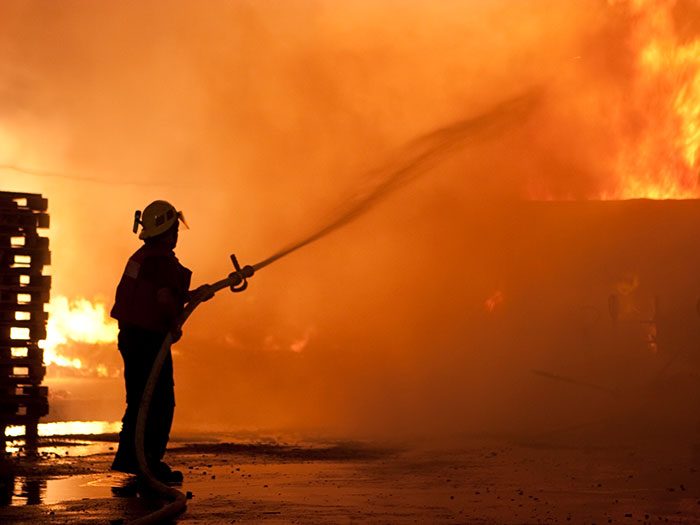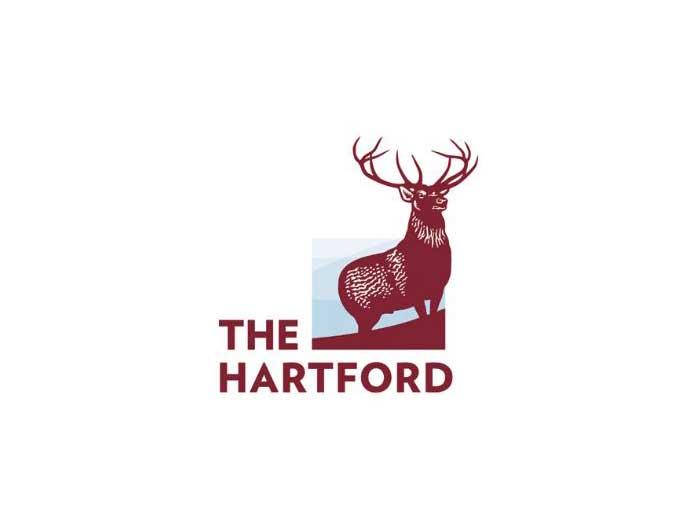Sponsored Content by Travelers
Holistic Site Security Douses Wood-Framed Fire Risk
Over a July weekend in 2017, five buildings in a Waltham, Mass., apartment complex burned to the ground. This only a month after another blaze took down an expansive but unoccupied building in nearby Dorchester. In both cases, local firefighters spent more than 24 hours getting the flames under control and extinguishing hot spots.
Both buildings were still under construction, and both were consumed by fire so quickly because their bones were not made of the steel beams that traditionally hold up large structures — but of wood.
The vulnerability of wood frame construction to a fast-spreading fire (during the stage of construction when framing is exposed) first garnered attention in 2012, when a multi-story senior center in Oakland, Calif., was incinerated down to its first floor, which was made of concrete.
“Since then we have seen increasing frequency of these fires as wood framing becomes more common for large buildings,” said Peter Wilcox, Inland Marine Director for Travelers, specializing in construction and renewable energy.
Several trends in the construction industry are feeding the rise of wood-framed construction – and construction fires. This presents a worker safety risk as well as property risk. Project owners/developers can help protect themselves on all fronts by incorporating fire prevention protocols into a holistic risk-management approach that considers both worker safety and property exposures.
Industry Trends: Materials and Labor
Wood has always been the primary building material for smaller residential structures, but multi-story apartments, big commercial buildings and mixed-use spaces traditionally relied on steel framing.
“More builders are using wood framing today because wood is less expensive per square foot, easily obtained from the local lumber yard, and much easier to work with. You can usually make changes to the design, such as changing a window opening, relatively easily. And that means that buildings get done faster as well,” Wilcox said.
Faster timelines mean contractors can take on more projects.
Tight schedules and heavy workloads heighten safety risk on their own, but the continuing skilled-labor shortage in construction compounds the exposure.
“A lot of experienced tradesman left the profession during the recession in 2008,” Wilcox said. “As work picks up again, the growing labor pool may be less experienced with fire safety and prevention than in the past. This includes site supervisors as well as laborers.”
The industry has focused its energy on aspects of worker safety, including ergonomics, proper handling of equipment and slip and fall prevention – but the risk of fire remains an important and potentially overlooked risk.
“Clearly fire safety is an important worker safety issue as well.” Wilcox said. “Having fire extinguishers on-site is a start. But to be well prepared for a fire, it is best to address fire risk as part of a holistic site protection plan.”
A Holistic Approach to Site Security
Addressing fire safety begins with identifying potential sources of ignition, and then putting controls in place to manage them.
Hot-work activities present the most obvious source of construction fires. Soldering, welding or cutting metal, brazing refrigerant lines for A/C units or torch-applied roofing all send sparks flying. But these aren’t the only culprits. A commonly overlooked source is on-site cooking.
“The National Fire Protection Association (NFPA) found that cooking is a prevalent cause of fires on construction sites,” Wilcox said. “Once the building gets weather tight, the workers want a break room, a place for coffee pots, microwaves and hot plates. Some job sites bring in gas grills for Friday afternoon cookouts. But people forget what they’ve left on the cooktop.”
Other ignition sources include smoking, temporary heat, and arson.
“These are all things our risk control consultants are looking for on a job site, and identifying these risks is where we begin to build a fire prevention plan,” Wilcox said.
There are some common concepts or tenets in fire prevention plans. The primary tenet of a fire prevention plan is good housekeeping.
“Good housekeeping is close to godliness,” Wilcox said. “If we have a clean site, we’ll have a safe and productive site. Eliminating scrap piles and wood shavings gets rid of those small materials that can really get a fire going.”
The second tenet is training and supervision, especially when less-experienced workers are conducting hot-work activities. In addition to learning how to safely execute these tasks, workers also need proper response training for when something goes awry.
Wilcox cited one incident that happened early in his career, where plumbers were soldering fittings to a pipe protruding from the finished drywall. They noticed that smoke was coming out from the wall opening and they had repeatedly used fire extinguishers to put out the flames sparked by their work. They left for the day when they finished their work, not knowing that the fire has spread deep inside the wall cavity. The entire project ended up in smoke.
“They never bothered to tell anyone they had discharged their extinguisher. A supervisor should have been informed, and the fire department should have been called to come out and make sure the flames didn’t spread,” Wilcox said. “It’s a lot cheaper to remove a section of drywall and check for fire than to rebuild an entire structure.”
In fact, it is best to involve the local fire department as an active participant in a fire prevention plan from the start, Wilcox said. Site supervisors can ask them to do walk-throughs, identify potential hazards and recommend solutions.
A third tenet is having the right equipment on hand and ready to go. Fire extinguishers are a no-brainer, but many sites don’t turn on sprinkler systems until the building is complete, for fear of extensive water damage.
“A fire does a lot more damage than water. There are some communities now trying to get their fire departments to allow builders to activate sprinkler systems earlier in the project, even though current building codes don’t require it,” Wilcox said. “Having sprinkler systems activated can eliminate or reduce the spread of fire during construction which can minimize project delays and keep employees and surrounding areas safer.”
Finally, a fire prevention plan should be part of a wider site security initiative that includes surveillance and security guards who are also trained to identify potential ignition sources and other construction site hazards. “Guards are not only there for security and theft prevention; they look out for the safety of the building overnight,” Wilcox said.
Risk Control Expertise
Travelers can provide resources and information to help develop fire prevention plans, including, written guidelines, safety bulletins and site security checklists. Risk control consultants also conduct site visits and can offer recommendations to help manage potential fire risks.
“With wood-frame construction, we can visit the site when framing starts, and then go out two or three more times as it progresses. Our consultants can provide detailed reports of their observations and recommend some ways the site can improve its security and fire safety,” Wilcox said.
“Many of our recommendations and resources to clients are based on NFPA standards, such as NFPA 241, Standard for Safeguarding Construction, Alteration, and Demolition Operations. This standard addresses common sources of fires like hot-work activities, but also discusses overall site security. It’s a comprehensive set of best practices to prevent fire.”
And because wood framing seems here to stay, it’s a standard worth implementing ASAP.
To learn more, visit https://www.travelers.com/resources/business-industries/construction/protecting-your-construction-site-from-fire-water-and-theft.aspx.
This article was produced by the R&I Brand Studio, a unit of the advertising department of Risk & Insurance, in collaboration with Travelers. The editorial staff of Risk & Insurance had no role in its preparation.












